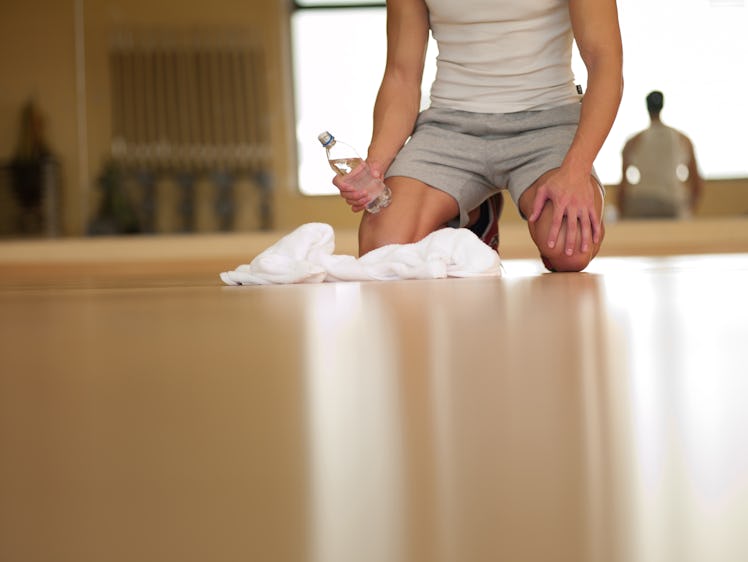Kegels Exercises For Stronger Erections? Keep Dreaming.
If you want to last longer in bed, you're barking up the wrong tree with kegel exercises.

Kegel exercises — repeatedly clenching your pelvic floor muscles like you would to stop peeing midstream or suppress a fart in public — are typically thought of as a women’s thing, especially after they’ve birthed a small human and want to tighten up down there. But plenty of guys also want to strengthen this “sling” of muscles and tissues that hold the bladder, rectum, colon, abdomen, and other lower-trunk organs in place. The main reason Kegel exercises for men are so popular? For the rock hard, long-lasting erections, of course. Bad news for Kegel-loving men everywhere: It’s all a big fat myth.
“I’ve read forums and blogs claiming that Kegels can improve erections, but there is no clinical evidence showing that they will,” says Jamin Brahmbhatt, M.D., a urologist at Orlando Health South Lake Hospital. “I suppose that, theoretically, if your pelvic floor muscles are stronger, then when you ejaculate, it would maybe go farther. Or perhaps certain sexual positions might be a bit easier to do for longer if you have a strong pelvic floor. But generally, no, Kegels are not going to give you better or stronger erections.”
The reason Kegels don’t do much in the sexual department is that most men’s pelvic floors are already sufficiently strong. Even if you were to strengthen them further by doing Kegels, you wouldn’t net noticeable gains in the bedroom. “Besides, if you go to the gym regularly and do squats and leg work, you’re probably already working out your pelvic floor muscles,” he adds.
For men experiencing erectile dysfunction, however, Kegels can be a boon for sex. A study of 55 men, of an average age of 59, found that those who performed Kegel exercises in addition to making healthy lifestyle changes such as getting more exercise, losing weight, and cutting back on booze had significantly better erectile function after three months than those who only made lifestyle changes. In fact, because the results were so impressive, the researchers put all the guys on a Kegel routine for the next three months. Then, after six months, with their strengthened pelvic floor muscles, 40% of the men attained normal erectile function.
There is another group of men who truly can benefit from Kegels: those whose pelvic floor muscles have been impacted by a medical condition, such as a prostate procedure, Parkinson’s disease, or another condition that hinders muscle control. The pelvic floor muscles can also become weaker with age, so guys in their 60s, 70s, and beyond who can’t control their bladders or bowels might be helped by Kegel exercises.
“Also, if you are very overweight, you’ll have a lot of intraabdominal pressure that may be forcing things down, which can cause problems with your bladder and other organs,” Brahmbhatt says. “But if that’s the case, you’d be much better off focusing on losing weight than on strengthening your pelvic floor muscles.”
If you fall into one of the camps that could benefit from Kegels, your first course of action should be seeing your doctor. “I tell my patients who are going to have prostate surgery to start working on their pelvic floor muscles now,” Brahmbhatt says. “I can explain the basics to them — imagine you have to pee, hold it, repeat — but I usually refer them to a physical therapist who specializes in pelvic muscles. Yes, you can look up how to do Kegels online, but that doesn’t mean you’ll do them right, especially the more advanced moves that require real focus.”
For the majority of men, however, Kegels would be a futile effort. Take it from Brahmbhatt: “As a urologist, I have never prescribed Kegels to a young, healthy guy.”
This article was originally published on